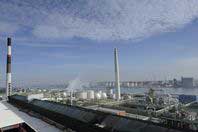Lanxess invests EUR25 mn in PA site in Antwerp

German speciality chemicals company Lanxess is further strengthening its integrated production complex for polyamide and precursors for plastics in Antwerp, Belgium. With an investment of roughly EUR25 million in 2017, the chemicals company will primarily implement measures to further enhance efficiency.
“Our integrated production complex in Lillo (Antwerp) is the backbone of our global business for high-tech plastics. Given the trend toward lightweight construction in the automotive industry, for example, this is a major future market. Therefore we are continuously strengthening the competitiveness of this site. In total, our company has invested more than EUR300 million in Lillo since 2004 – a sum that shows our firm commitment to this site,” said Matthias Zachert, Chairman of the Board of Management at Lanxess.
The announcement was made on the occasion of the 50th anniversary of caprolactam production at the site. Caprolactam is a key precursor for the production of Lanxess’s high-tech plastics. Besides the automotive industry, these plastics are also used in electrical and electronics applications.
In recent years the Cologne-headquartered company has focused on building a balanced value chain for its high-tech plastics production operations, which absorbs the lion’s share of the intermediates produced for captive use. A milestone on that strategic path was the construction of a world-class polymerisation plant with a capacity of 90,000 tonnes/year connected directly to the caprolactam production facility. Since its start in summer 2014, the polyamide is shipped from Antwerp to Lanxess’s global network of compounding facilities, where it is further processed into the high-tech plastics.
Production at the site began half a century ago on April 24, 1967. The plant was a pioneer in the harbour area, which has developed into the largest integrated chemical cluster in Europe.
The complex had a capacity of 160,000 tonnes of caprolactam per year in 2004 when Lanxess was founded; current capacity is 220,000 tonnes/year. Since the plant came on stream 50 years ago, 6.2 million tonnes of caprolactam have been produced.
Lanxess says it not only expanded capacity considerably, it also modernised the complex, including the implementation of a virtually energy self-sufficient infrastructure.
In Belgium, Lanxess has three production sites in the Antwerp docklands. Caprolactam and polyamide are produced in Lillo-Antwerp, glass fibres and rubber chemicals are manufactured in Kallo. Arlanxeo, a joint venture of Lanxess and Saudi Aramco, produces synthetic rubber at the site in Zwijndrecht. Lanxess has a total staff of roughly 1,250 in Belgium, including Zwijndrecht.
(PRA)Copyright (c) 2017 www.plasticsandrubberasia.com. All rights reserved.



















































